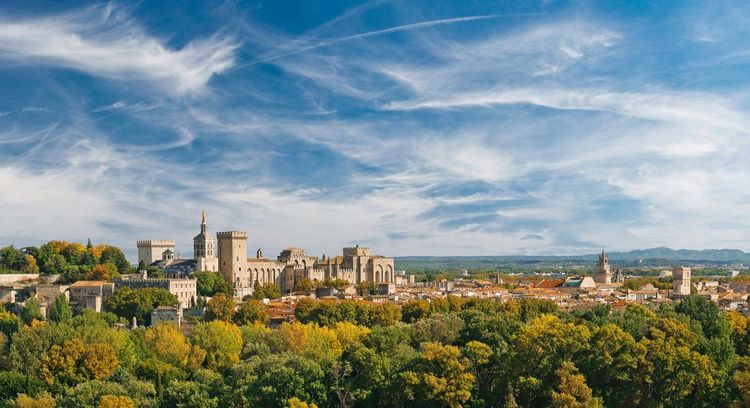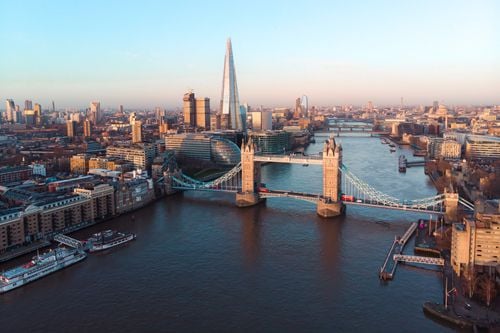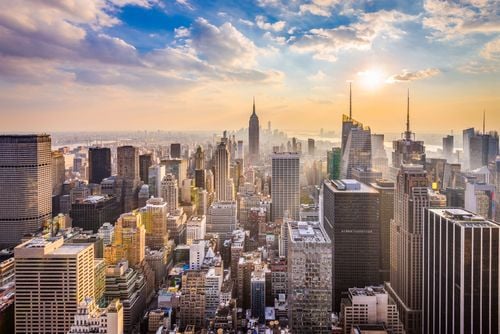The Avignon Festival was inaugurated in 1947. It is a cultural event that brings together theatre and live performance. Its creator, Jean Vilar, had the ambition of creating a popular theatre and presenting the performing arts (theatre, dance) to make them accessible to all. Initially, he took part over the course of a week, presenting three dramatic performances on different stages. From July 1848 onwards, it became a regular cultural fixture in the city, and took on its current name.
A real cultural attraction, the Avignon Festival attracts millions of visitors every year. The stone walls disappear under the posters and leaflets that flood the streets. Numerous monuments are put to good use to host the plays for the duration of the festivities. The schools and colleges that pupils have deserted for the summer holidays are also kept busy and transformed into performance halls. The whole city vibrates to the rhythm of the performances throughout July. After a few years disrupted by the health crisis, the congress returns in 2023 for a new edition full of promise. Inaugurated in 1947, the festival got off to a shaky start, taking place over just one week and presenting only a handful of plays. The Festival d'Avignon began to take off in the mid-1960s, arousing enthusiasm not only among the people of Avignon but also among audiences from outside the city. Little by little, the event became popular and world-famous.
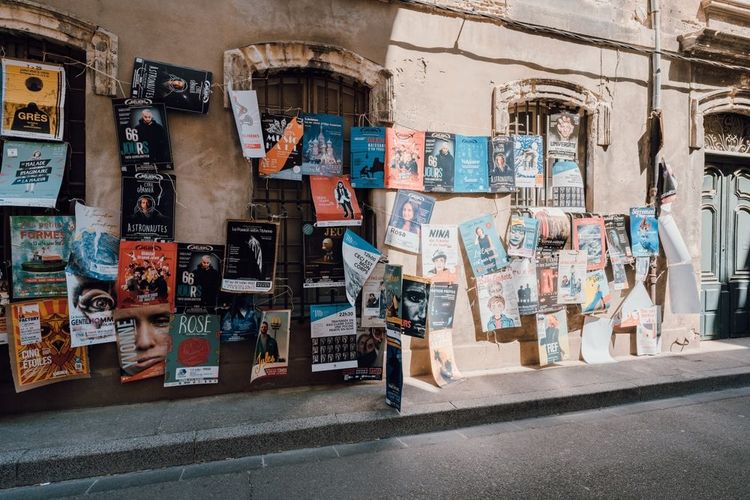
Posters hanging in a street during the Festival d'Avignon, France.
- © LI SEN / Shutterstock🚆 Your journey to Avignon by train or bus
Near Avignon, the enchanting charm of Provence invites you to escapeFrance's oldest festival
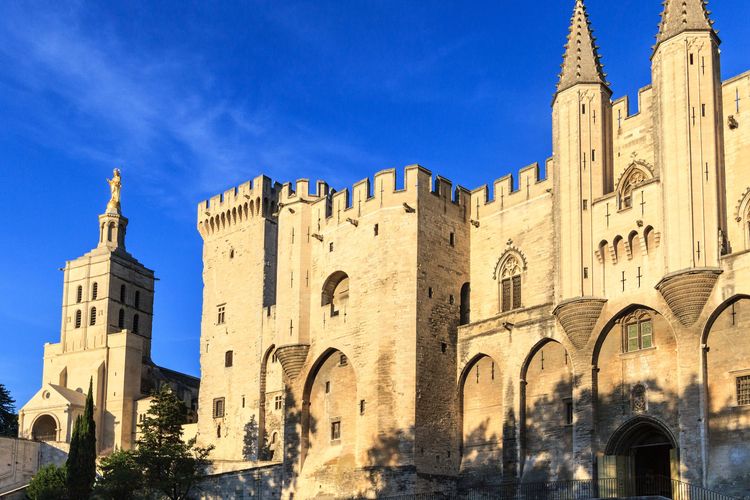
Popes' Palace and Doms Cathedral, Avignon, France.
- © zechal/123RFA two-part event
It takes place in two parts. A first IN festival and a second OFF festival. Although they both take place during the same period, they have nothing to do with each other. The Festival d'Avignon IN is the main event, created in 1947. Its little brother, the Festival OFF, is more recent, founded by André Benedetto in 1966, a few years after its big brother. As the IN is directly funded by the Ministry of Culture and the City of Avignon, its budget is mainly made up of public funds. The OFF Festival, on the other hand, is self-financed and has only recently received financial support from the State.
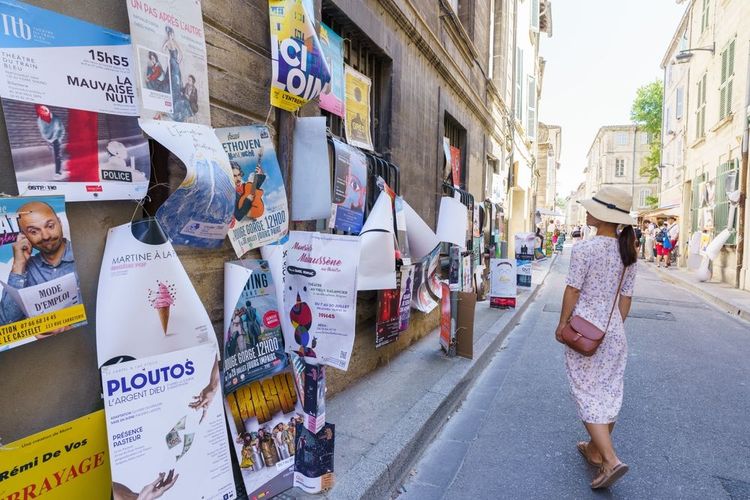
Avignon Festival posters in the streets, France.
- © LI SEN / ShutterstockThe programme is quite different, but the two events still reach the same audience. The Festival IN takes a more institutional form and remains difficult for artists to access. Its counterpart has more freedom in its programming, encourages self-promotion and therefore allows for creativity. Street art is given pride of place.
A world-famous event
The Festival is one of the world's best-known events. Every July, the city of the Popes transforms itself into a theatre town, turning monuments, gymnasiums and schools into stages. The architectural heritage of this small Provencal town is so rich that there's no shortage of places to visit. No one would have imagined that the Festival Week, which began as a performance of dramatic art, would be exported around the world. Today, it is one of the great French and international cultural celebrations.
The main venues for the event
The Cour d'honneur of the Palais des Papes
This is precisely where the Festival d'Avignon was born. The Festival's creator and director, Jean Vilar, directed William Shakespeare's The Tragedy of King Richard II. For several years, this courtyard was the main stage for the event. The 1960s brought new inspiration to the event by offering new stages in venues more suited to the artists. Despite this diversity, the courtyard of the Palais des Papes remains legendary and continues to host performances. The site has even been awarded a label in 2019 to reward the organisers' actions in terms of safety and welcoming spectators.
📍 Address: place du Palais, Avignon (84 000)
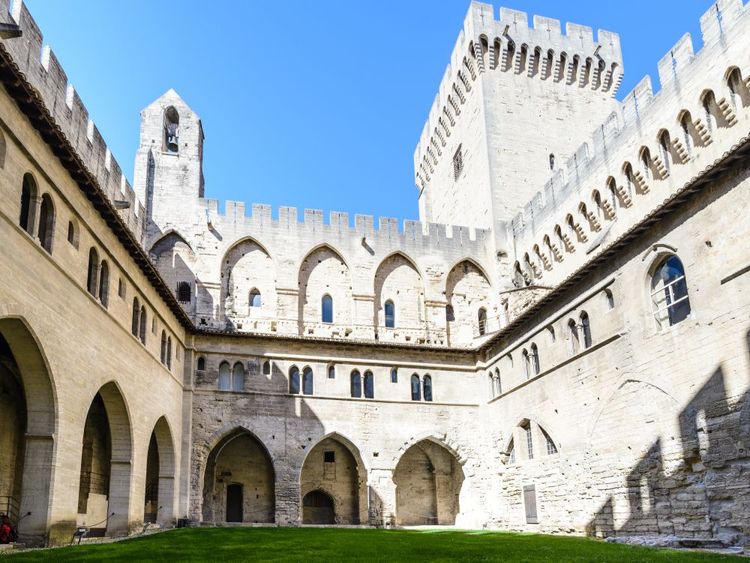
The inner courtyard of the Palais des Papes, Avignon, France.
- © gurb101088 / ShutterstockLa FabricA
A performance space that hosts artists and other members of the artistic community in residence for the rest of the year, in order to prepare the next stage design. It's important for the city to pamper artistic teams, to reinforce the learning of the performing arts and raise public awareness. From July onwards, the facility will be transformed into a theatre with a capacity of up to 600 spectators. It has the same dimensions as the Cour du Palais des Papes.
What's more, the venue provides access for people with reduced mobility and has installed a technical device for hearing-impaired visitors with hearing aids.
📍 Address: 11 rue Paul Achard, Avignon (84 000)
The Cloître des célestins
At the heart of this 16th-century building is a pretty courtyard adorned with arches and graced by two enormous plane trees. A veritable showcase of light during the day, the site is transformed into an open-air stage in the evening. A unique experience to be had in high summer to admire Avignon's starry skies for the duration of a show.
📍 Address: place des corps-saints, Avignon (84 000)
The Cloître des Carmes
This is the second venue to host the Festival after the Palais des Papes. Since 1967, theatrical and musical performances have taken place within its stone walls. The special feature of this venue is that the stage extends under the Gothic-style arcades. The hall can accommodate up to 500 visitors.
📍 Address: place des Carmes, Avignon (84 000)
The Saint Joseph High School
This huge building, organised around two inner courtyards, was built in the 19th century by the Jesuits on the ruins of the Cordeliers convent. It is one of the main venues for the Festival, and is put to good use every summer when the pupils leave school and empty the boarding school. The event is held in a number of different areas, including the large square courtyard, the Jardin de la Vierge, a leafy cloister named after the statue of the Virgin that sits at its centre, and the lycée gymnasium.
Former students will remember how difficult it was to find their way around the corridors, which were closed off for stage management or backstage at shows.
📍 Address: 62 rue des Lices, Avignon (84 000)
The Grand Avignon Opera
This magnificent theatre was the victim of a terrible fire in the 19th century. It was rebuilt in the Italian style we know today. A beautiful hall that can accommodate up to 700 people.
📍 Address: place de l'Horloge, Avignon (84 000)
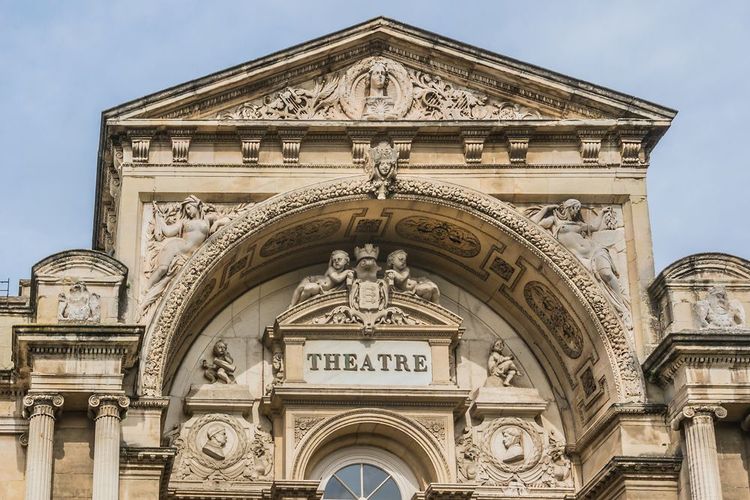
L'Opéra Grand Avignon located on Place de l'Horloge, Avignon, France.
- © Kiev.Victor / ShutterstockThe Jean Vilar House
Affiliated with the Festival d'Avignon, this venue is first and foremost a tribute to Jean Vilar, the founder of the event. It retraces the author's life through exhibitions and valuable archives. A building that hosts shows and theatrical performances during July as well as the official bookshop, every day.
📍 Address: 8 rue de Mons, Avignon (84 000)
Practical information
👉 When should you go?
The Festival takes place every year in July and lasts around 3 weeks. We advise you to book your stay in advance as this is a very popular event and places go quickly. It would be a shame to devote just one day to it, as the programme is so rich. It's an opportunity to see a variety of shows and to take an interest in more contemporary creations. We recommend staying for 2 or 3 days.
👛 Prices:
The average price is around €25 for a seat. The price varies according to the venue and the category chosen. Young people and students can take out a Culture Pass, which gives preferential pricing and facilitates access to culture for younger people.
👉 Other information :
Bookings can be made up to 4 hours before the show and the box office will resume sales 45 minutes before the performance.
All the information about the event can be found on the website: festival-avignon.com.
Where to stay during the event?
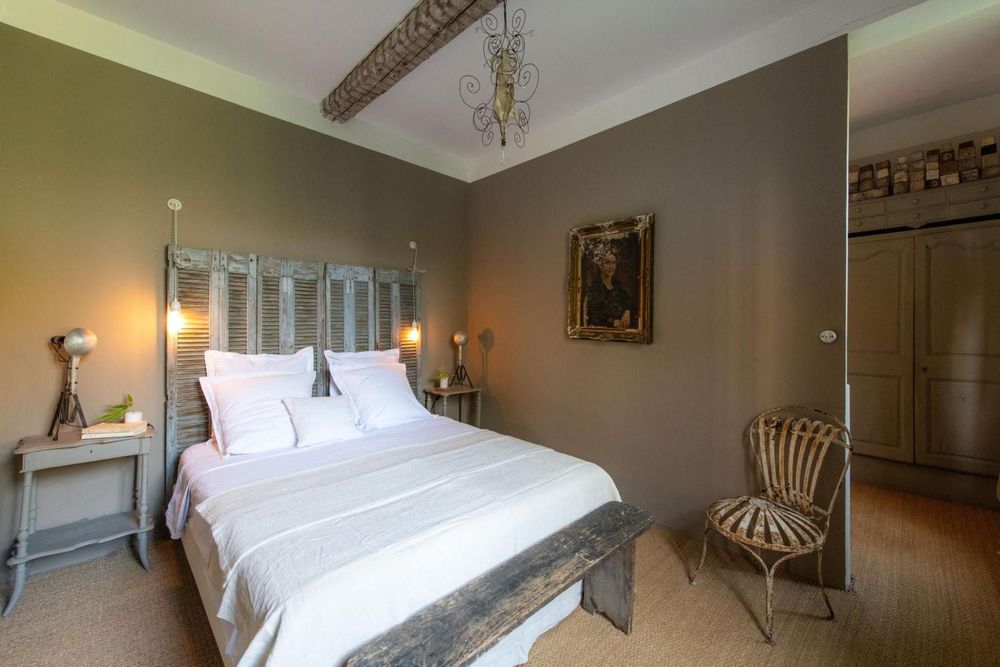 Avignon
Avignon
19th century house and garden in Intramuros
This magnificent 19th-century house offers an idyllic setting for your stay in the City of the Popes.Our favourite address!
Meticulous cuisine and fresh produce... head for Le Vintage, a restaurant in the centre of the city, which plays with the different seasons to create homemade dishes. The menu also caters for all dietary requirements, with a selection of vegetarian and vegan dishes.
